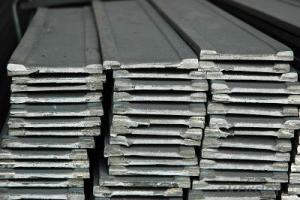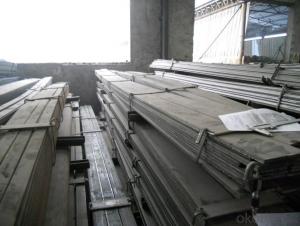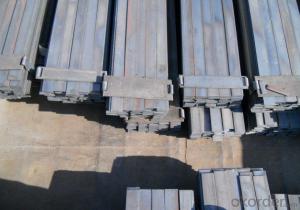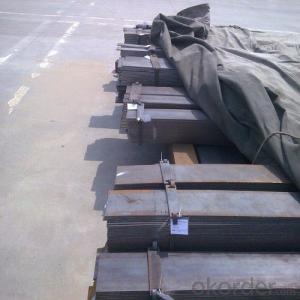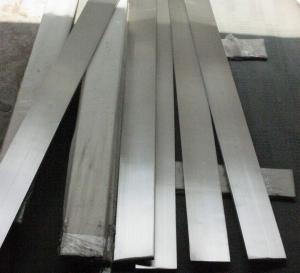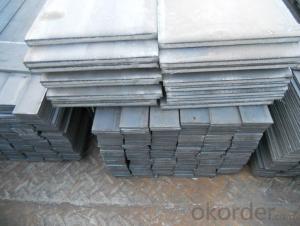JIS standard steel flat bar for construction
- Loading Port:
- Tianjin
- Payment Terms:
- TT OR LC
- Min Order Qty:
- 10000 m.t.
- Supply Capability:
- 100000 m.t./month
OKorder Service Pledge
OKorder Financial Service
You Might Also Like
Item specifice
Product Description:
OKorder is offering JIS standard steel flat bar for construction at great prices with worldwide shipping. Our supplier is a world-class manufacturer of steel, with our products utilized the world over. OKorder annually supplies products to European, North American and Asian markets. We provide quotations within 24 hours of receiving an inquiry and guarantee competitive prices.
Product Applications:
JIS standard steel flat bar for construction are ideal for structural applications and are widely used in the construction of buildings and bridges, and the manufacturing, petrochemical, and transportation industries.
Product Advantages:
OKorder's Steel flat bar are durable, strong, and resist corrosion.
Main Product Features:
· Premium quality
· Prompt delivery & seaworthy packing (30 days after receiving deposit)
· Corrosion resistance
· Can be recycled and reused
· Mill test certification
· Professional Service
· Competitive pricing
Product Specifications:
Manufacture: slited
Slitting precision (width) : 0.5 mm or less
Raw material: Q235B, Q345B, Q235-1 b
crosscutting precision (length) : 2 mm or less
Processing: the thickness of 2.0-16 mm;
Shear length: 2000 mm above
Wide degree: 15-1250 - mm;
Leveling precision: 1-2 MM square
Packaging: Export packing, nude packing, bundled
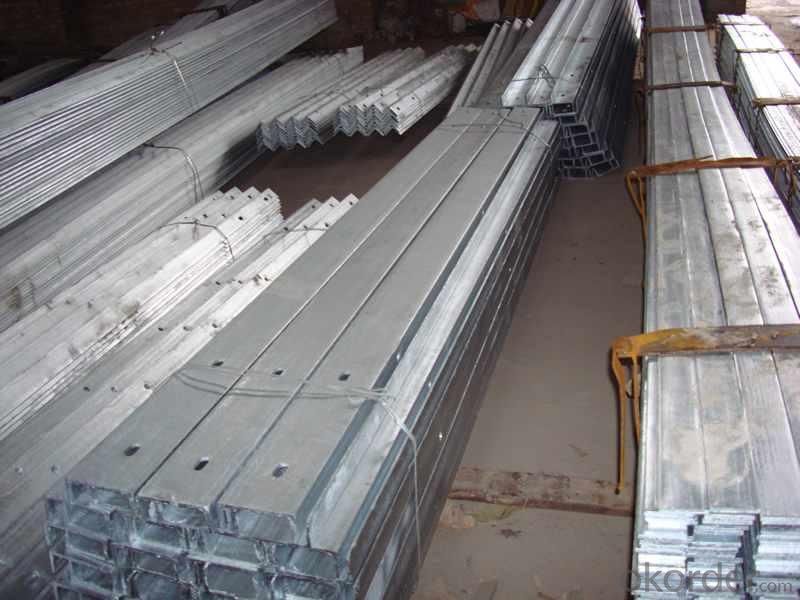
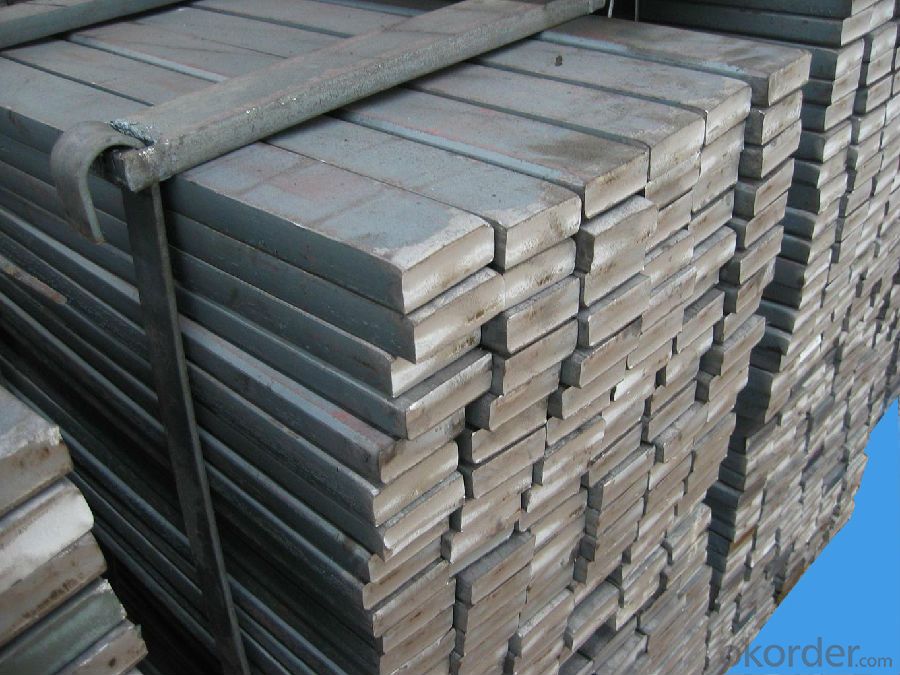

FAQ:
Q1: What makes stainless steel stainless?
A1: Stainless steel must contain at least 10.5 % chromium. It is this element that reacts with the oxygen in the air to form a complex chrome-oxide surface layer that is invisible but strong enough to prevent further oxygen from "staining" (rusting) the surface. Higher levels of chromium and the addition of other alloying elements such as nickel and molybdenum enhance this surface layer and improve the corrosion resistance of the stainless material.
Q2: Can stainless steel rust?
A2: Stainless does not "rust" as you think of regular steel rusting with a red oxide on the surface that flakes off. If you see red rust it is probably due to some iron particles that have contaminated the surface of the stainless steel and it is these iron particles that are rusting. Look at the source of the rusting and see if you can remove it from the surface.
- Q:What are the different methods of surface hardening for steel flat bars?
- There are several different methods of surface hardening for steel flat bars, each offering unique advantages and applications. Some of the most common methods include: 1. Flame Hardening: This process involves heating the surface of the steel flat bar with a flame and then quenching it rapidly, resulting in a hardened outer layer while retaining a tough core. Flame hardening is suitable for larger flat bars and offers good wear resistance. 2. Induction Hardening: In this method, an alternating electromagnetic field is used to heat the surface of the steel flat bar, followed by quenching. Induction hardening provides precise control over the hardened depth and is ideal for flat bars with complex geometries or smaller sizes. 3. Nitriding: Nitriding involves exposing the steel flat bar to a nitrogen-rich environment at elevated temperatures. This process forms a hard nitride layer on the surface, providing excellent wear and corrosion resistance. Nitriding is commonly used for flat bars that require superior surface hardness. 4. Carburizing: Carburizing involves heating the steel flat bar in a carbon-rich environment, allowing carbon atoms to diffuse into the surface. The part is then quenched to achieve hardness. Carburizing offers high wear resistance and is suitable for flat bars that require a hardened surface layer. 5. Carbonitriding: This method combines the benefits of both carburizing and nitriding. The steel flat bar is heated in a nitrogen-rich and carbon-rich atmosphere, resulting in a hard surface layer with improved wear and corrosion resistance. Carbonitriding is commonly used for flat bars that require a combination of hardness and toughness. 6. Laser Hardening: Laser hardening utilizes a high-energy laser beam to heat and rapidly cool the surface of the steel flat bar, creating a hardened layer. This process offers precise control over the hardened area and is suitable for flat bars with intricate designs or localized hardening requirements. Each surface hardening method has its own advantages and limitations, and the choice depends on the specific requirements of the steel flat bar application, such as desired hardness, wear resistance, and dimensional complexity.
- Q:Can steel flat bars be used for making molds or tooling fixtures?
- Yes, steel flat bars can be used for making molds or tooling fixtures. Steel flat bars are known for their strength, durability, and resistance to wear and tear. These characteristics make them ideal for creating molds or tooling fixtures that require stability and longevity. Additionally, steel flat bars can be easily machined and shaped into the desired form, making them versatile for various mold or fixture designs. Overall, steel flat bars are a reliable choice for constructing molds or tooling fixtures due to their robust nature and ability to withstand the demands of manufacturing processes.
- Q:What is the maximum length of steel flat bars available?
- Manufacturers and suppliers can offer steel flat bars with varying maximum lengths. Generally, standard lengths for these bars fall between 20 and 24 feet. It is worth noting that custom orders or specialized uses may allow for longer lengths, albeit at an extra cost or requiring special transportation precautions. Thus, it is advisable to consult the manufacturer or supplier directly to ascertain their specific maximum length of steel flat bars.
- Q:Can steel flat bars be coated with anti-slip materials?
- Yes, steel flat bars can be coated with anti-slip materials. There are various methods and materials available for coating steel flat bars to provide an anti-slip surface. One commonly used material is a non-slip epoxy coating that contains aggregates such as aluminum oxide or silicon carbide. These aggregates create a rough surface that enhances grip and prevents slips or falls. Additionally, other materials like rubber, vinyl, or adhesive tapes with anti-slip properties can also be applied to steel flat bars to increase their slip resistance. These coatings can be beneficial in areas where slip hazards are present, such as walkways, ramps, stairs, or industrial settings. Properly coating steel flat bars with anti-slip materials improves safety and reduces the risk of accidents in various environments.
- Q:What are the common safety precautions when working with steel flat bars?
- To ensure the safety of workers while working with steel flat bars, it is necessary to adhere to several common safety precautions. Firstly, it is of utmost importance to wear appropriate Personal Protective Equipment (PPE). This entails wearing safety glasses or goggles to protect the eyes from flying debris or sparks, gloves to safeguard hands from sharp edges, and steel-toe boots to shield feet from heavy objects or falling materials. Secondly, it is crucial to employ proper lifting techniques to avoid back or muscle injuries, given the weight of steel flat bars. Lifting should be done using the legs rather than the back, and any twisting or jerking movements during lifting should be avoided. Moreover, when not in use, steel flat bars should be stored securely and in an organized manner to prevent tripping or falling hazards. Furthermore, heavy bars should be stored at a lower height to minimize the risk of injuries caused by falling objects. Additionally, cautious handling is vital when working with steel flat bars, particularly due to the presence of sharp edges and corners. Workers should always be aware of their surroundings and refrain from sudden movements that may result in injury. When necessary, proper lifting equipment such as lifting clamps or tongs should be utilized to ensure a secure grip on the bars. Furthermore, fire safety measures must be implemented as steel flat bars can produce sparks during cutting or welding. It is essential to have a fire extinguisher nearby and ensure adequate ventilation in the workspace to prevent the accumulation of flammable gases or fumes. In order to ensure comprehensive safety, all workers should receive appropriate training and education on the handling and use of steel flat bars. This includes understanding the correct tools and equipment to use, as well as being aware of the potential hazards associated with working with steel flat bars. By adhering to these common safety precautions, the risk of accidents and injuries can be minimized, thereby creating a safe working environment for those working with steel flat bars.
- Q:What are the different dimensions available in steel flat bars?
- The dimensions available in steel flat bars can vary, but common sizes include thicknesses ranging from 1/8 inch to 1 inch, and widths ranging from 1/2 inch to 12 inches.
- Q:Can steel flat bars be used in fire-resistant structures?
- Yes, steel flat bars can be used in fire-resistant structures. Steel is inherently a fire-resistant material due to its high melting point and low thermal conductivity. In addition to that, steel flat bars are often used in construction for their strength, durability, and versatility. They can be incorporated into fire-resistant structures such as fire-resistant walls, doors, and frames. Steel flat bars can also be used as structural supports and reinforcements in fire-resistant buildings. However, it is important to note that fire-resistant structures require careful design and construction, including the use of appropriate fire-resistant coatings or insulation materials to enhance the overall fire resistance of the building.
- Q:Can steel flat bars be used for making storage cabinets?
- Yes, steel flat bars can be used for making storage cabinets. Steel flat bars are sturdy and durable, making them suitable for constructing storage cabinets that can withstand heavy loads. They offer excellent structural integrity and can be easily welded or bolted together to create a stable and secure storage solution. Additionally, steel flat bars are resistant to rust and corrosion, ensuring the longevity of the storage cabinets. Therefore, using steel flat bars for making storage cabinets is a practical choice that can provide strength, durability, and a professional appearance.
- Q:What does QB stand for in Q235B flat steel? What's the difference between Q235B and Q235A?
- There are also some subtle differences between Q235A and Q235B:1, chemical composition: Q235A:C:0.14~0.22:Mn:0.30~0.65; S:0.050;2, mechanical properties: tensile test without distinction, impact test A do not do, Q235B I-beam, Q235B angle steel, Q235B channel steel, Q235BH steel, Q235B flat steel B do 20 degree impact test, V type impact power (longitudinal) J no less than 27.
- Q:Can steel flat bars be used for tooling or machinery components?
- Yes, steel flat bars can be used for tooling or machinery components. Steel flat bars are known for their strength, durability, and versatility, making them suitable for a wide range of applications in various industries. They can be easily machined, welded, and shaped to meet specific design requirements, making them ideal for creating tooling or machinery components. Steel flat bars are commonly used as base plates, brackets, supports, and frames in machinery and tooling applications due to their ability to withstand heavy loads, resist impact and abrasion, and provide structural stability. Additionally, steel flat bars are available in different grades and finishes, allowing users to select the most suitable option based on the specific requirements of their tooling or machinery components.
1. Manufacturer Overview |
|
|---|---|
| Location | |
| Year Established | |
| Annual Output Value | |
| Main Markets | |
| Company Certifications | |
2. Manufacturer Certificates |
|
|---|---|
| a) Certification Name | |
| Range | |
| Reference | |
| Validity Period | |
3. Manufacturer Capability |
|
|---|---|
| a)Trade Capacity | |
| Nearest Port | |
| Export Percentage | |
| No.of Employees in Trade Department | |
| Language Spoken: | |
| b)Factory Information | |
| Factory Size: | |
| No. of Production Lines | |
| Contract Manufacturing | |
| Product Price Range | |
Send your message to us
JIS standard steel flat bar for construction
- Loading Port:
- Tianjin
- Payment Terms:
- TT OR LC
- Min Order Qty:
- 10000 m.t.
- Supply Capability:
- 100000 m.t./month
OKorder Service Pledge
OKorder Financial Service
Similar products
New products
Hot products
Hot Searches
Related keywords
